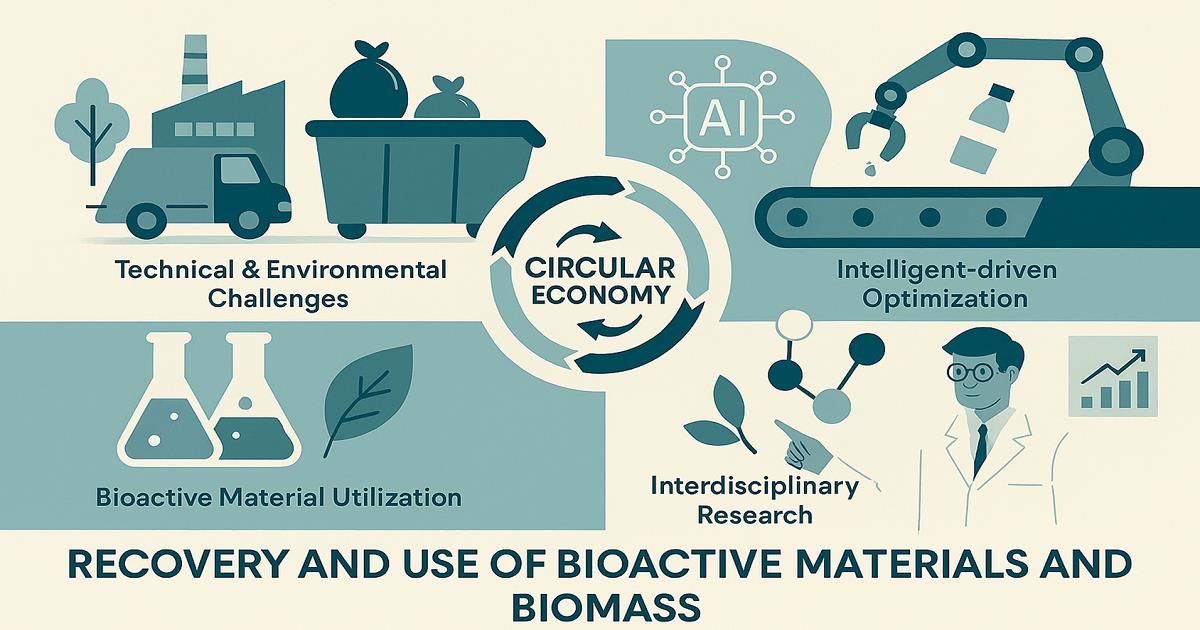Recovery and Use of Bioactive Materials and Biomass
Topic Information
Dear Colleagues,
Solid waste originates from many fields, including industrial and agricultural production, as well as daily life in general. The improper disposal of solid waste can lead to ecological environmental risks; however, solid waste is also an important resource. Bioactive materials and recyclable materials are significant components of solid waste, and the recovery in addition to the use of bioactive or recyclable materials are of great significance in regard to the recycling of waste substances.
This Topic has a threefold focus: The first pertains to the technical and environmental challenges in material cycling and waste management. The second involves utilizing artificial intelligence (AI) technology for intelligent identification, the optimization of recycling processes, and enhanced resource recovery. The third focuses on advancing interdisciplinary scientific research to drive further progress in material cycling and solid waste management.
Prof. Dr. Xiang Li
Dr. Tianfeng Wang
Dr. Xianbao Xu
Topic Editors
Keywords
- solid waste management
- bioactive materials
- recyclable materials
- ecological environmental risks
- interdisciplinary science of material cycles

Image courtesy of ©Dr. Xianbao Xu - Gdansk University of Technology